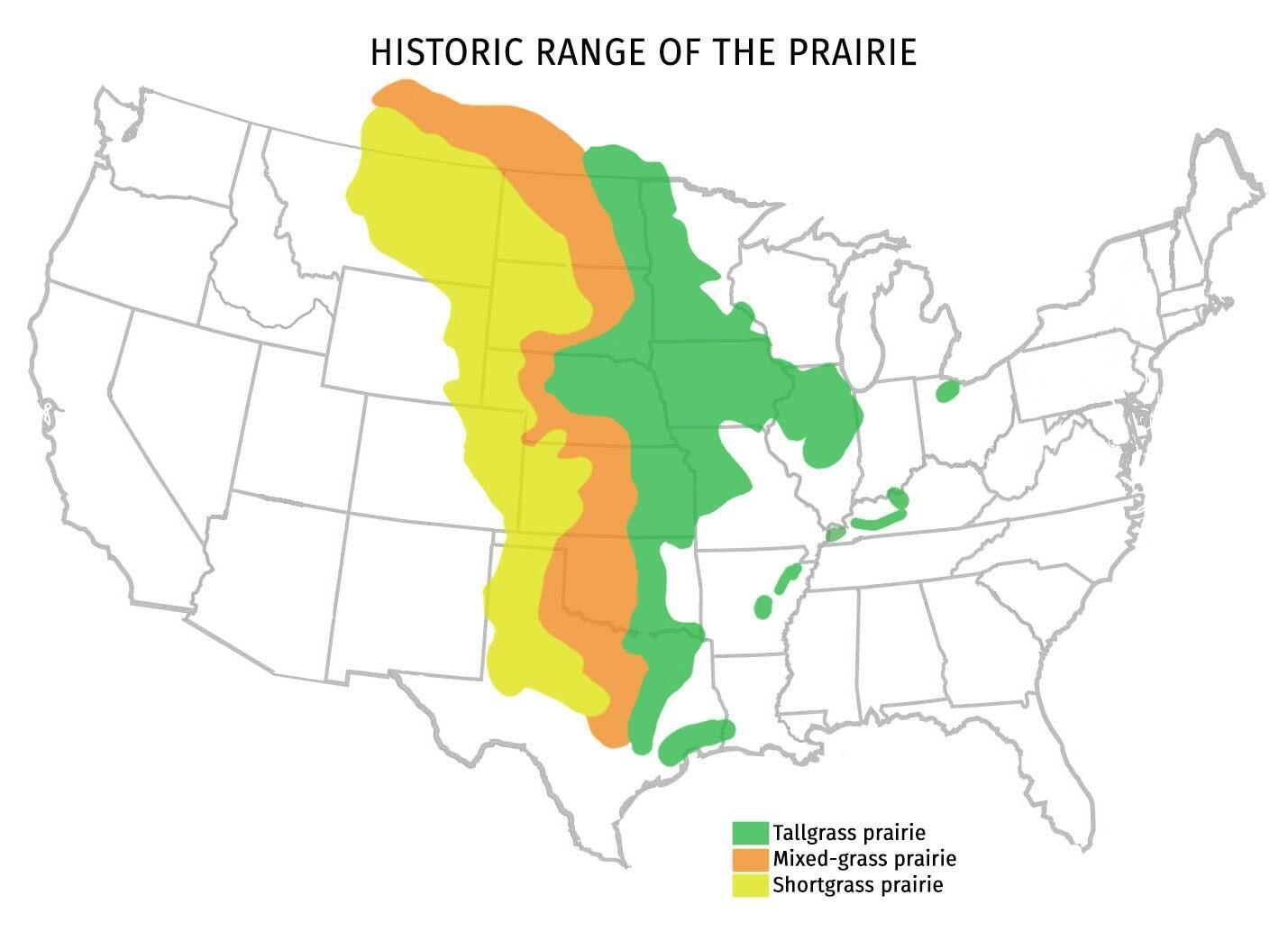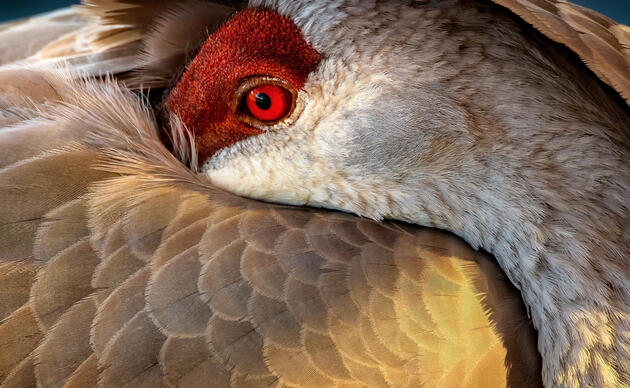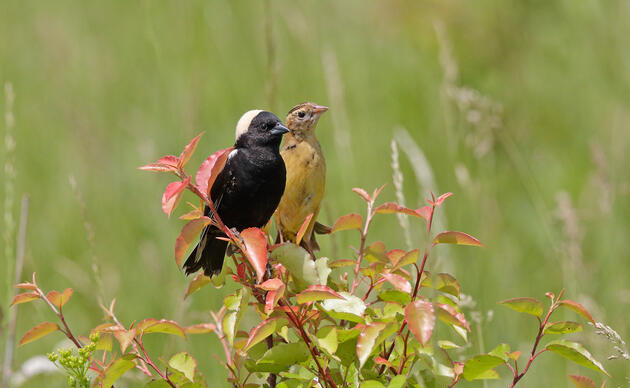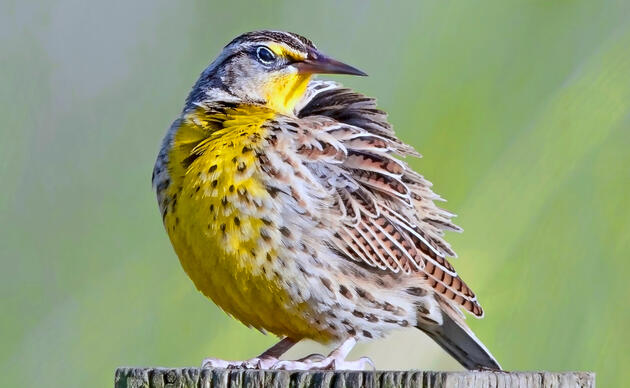What is a prairie? Prairie comes from the French word for “meadow” and is how we refer to North America’s largest grassland biome. Other temperate grasslands in the world include the Eurasian steppes and Argentine pampas. These biomes are characterized by their dominant vegetation, low growing (<1m) grasses and forbs. Grasslands in various forms historically covered 40% of the world’s land area.
In the Great Plains, our prairies are divided into three sub-divisions. Tallgrass prairie, which covers a small area of the eastern Dakotas and Nebraska, stretches east to Illinois and Ohio. Mixed grass prairie covers the central part of the states and stretches north to south from Southern Manitoba and Saskatchewan into Texas. Shortgrass prairie starts in far western parts of our states and stretch west to the Rocky Mountains. These divisions are somewhat fluid in where they are divided, largely because the divisions are created by differences in precipitation, evapotranspiration (water loss through plants as well as direct evaporation), and soil. As precipitation increases and evaporation decreases, we see the taller grass species, increased aboveground growth, and increased diversity in grasses and wildflowers, also known as forbs.

In the northern Great Plains, tallgrass and mixed grass prairies occur in areas with adequate precipitation to support modern commodity agriculture. Thus, significant proportions of these biomes have been converted from a native or natural state for use in growing food and fuel for a growing world population. Estimates from National Audubon Society’s North American Grasslands and Birds Report conclude that only 11% of tallgrass prairies, 21% of mixed grass prairies, and half of shortgrass prairies remain in an unconverted state. These prairies that remain face threats of invasion by non-native plants and trees, conversion to urban growth or cropland, incompatible use, and climate change.
"Today, I better appreciate grasslands’ role in agriculture, culture, and wildlife, as well as the benefits of water filtration, soil conservation, and carbon storage when helping producers make decisions on managing their grassland resources."
Growing up in this biome, I often didn’t appreciate the many values grasslands provide to civilization. Grasslands provided grazing for our family’s dairy cattle, a place to chase gophers and find birds’ nests, and a place to explore old building foundations and windmills. Today, I better appreciate grasslands’ role in agriculture, culture, and wildlife, as well as the benefits of water filtration, soil conservation, and carbon storage when helping producers make decisions on managing their grassland resources. I also enjoy taking my kids on walks through our family’s prairie as we learn about the incredible biodiversity of the prairie, particularly in prairie plants, and the traditional uses of some of these plants.
In future articles, we’ll talk more about the role grasslands, particularly prairies, play for birds and other wildlife, and the benefits they provide humans through food production, clean water, biodiversity, outdoor recreation, and soil conservation. We will also explore the tools grassland managers use to manage prairies to ensure habitat diversity in height and density, and plant diversity, for different grassland birds and pollinators.
To learn more about Audubon’s North America Grasslands and Bird report, click here.




